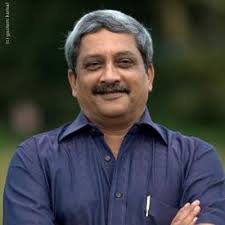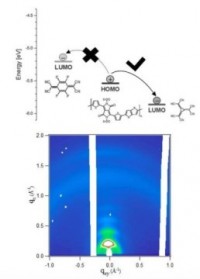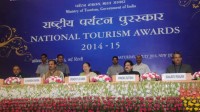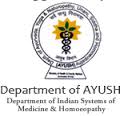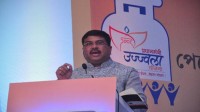Nalco, the Indian Aluminium major has started a signature campaign extending best wishes to Indian contingent for Rio Olympics that comprises of six girls from Odisha among others. Congratulating the athletes Dutee Chand & Srabani Nanda and hockey players Deep Grace Ekka, Namita Toppo, Lilima Minz & Sunita Lakra, Dr. Tapan Kumar Chand, CMD of the company said that the people of Odisha are proud of these participants and wished them all success.
Setting up of New Tourism Colleges
The Ministry of Tourism (MoT) has so far sanctioned 12 Institutes of Hospitality Management in the North Eastern States, list of these Institutes are at Annexure. Out of these Central Institute of Hotel Management, Guwahati, Central Institute of Hotel Management, Shillong, State Institute of Hotel Management, Gangtok and Food Craft Institute, Nawgaon are operational.
The State Government/Union Territory Administrations have been advised by the MoT to set up Hospitality Development Boards if the same do not exist in their respective States/Union Territories. The State Government of Maharashtra has reportedly setup Hospitality Development and Promotion Board.
List of Institutes in North Eastern States for which Central Financial Assistance has been granted by MoT.
- Central Institute of Hotel Management, Guwahati , Assam
- State Institute of Hotel Management, Itanagar, Arunachal Pradesh
- State Institute of Hotel Management, Imphal, Manipur
- Central Institute of Hotel Management, Shillong, Meghlaya
- State Institute of Hotel Management, Aizawl, Mizoram
- State Institute of Hotel Management, Dimapur, Nagaland
- State Institute of Hotel Management, Gangtok, Sikkim
- State Institute of Hotel Management, Agartala, Tripura
- State Institute of Hotel Management, Jorhat, Assam
- Food Craft Institute, Nawgaon, Assam
- Food Craft Institute, Tura, Meghlaya
- Food Craft Institute, Namchi, Sikkim
Defence Minister & HRD Minister release 3 books on Dr. APJ Abdul Kalam
The Defence Minister Shri Manohar Parrikar and Union Minister of Human Resource Development Shri Prakash Javadekar released three books on the life of former President Dr. APJ Abdul Kalam on July 27, 2016. The books entitled “Dr Kalam, Prerna ki Udaan” in Hindi, “Do You Know Dr. APJ Abdul Kalam” in English and “Prerna Nu Zarnu : Dr Abdul Kalam” in Gujarati language have been written by Dr. Unnat Pandit to pay tribute to Dr. Kalam on his first death anniversary.
Speaking on the occasion Shri Parrikar said that, “Dr. Kalam was known for his simplicity, thinking big to dream and putting energy to achieve that dream”. He said, Dr. Kalam’s scientific and nationalistic thought and his views on spirituality will always give motivation to students and youth of India. The author Dr. Unnat Pandit spoke about the contents of the book and the inputs that inspired him to chronicle the life of Dr. Kalam. Amongst others the function was attended by Shri Vinay Sahastrabuddhe, Rajya Sabha MP, Dr. G Satheesh Reddy, Scientific Advisor to Raksha Mantri who worked along with Dr. Kalam, Shri Atul Kothari, Secretary, Siksha Sanskruti Uttan Nyas, Shri Anil Raval, educationalist and Shri Sunil Ambekar Organizing Secretary ABVP who all addressed the August gathering.
Organic computers are coming !!
Summary:A team of researchers from Russia and Germany have managed to find a molecule that, to their opinion, could give the impetus to the development of organic electronics.
A team of the Lomonosov MSU researchers in collaboration with their German colleagues from the Institute of Polymer Research in Dresden (Leibniz Institute) managed to find a molecule that, to their opinion, could give the impetus to the development of organic electronics. The results of the work were published in Advanced Materials.
Scientists from the Moscow State University together with colleagues from Germany have found that a derivative of [3]-radialene, a molecule known to the science for nearly 30 years, can be used to create organic semiconductors. Dmitry Ivanov, the Head of the Laboratory of Materials Engineering at the Department of Fundamental Physics and Chemical Engineering, Moscow State University, believes that the achievement will greatly contribute to the development of organic electronics and, in particular, to fabrication of organic light emitting diodes and new classes of organic solar cells.
Organic or “plastic” electronics is a relatively young scientific field, which came to life about 15-20 years ago. Its purpose is the development of electronic devices based on organic materials. This type of devices is yet inferior to the standard silicon-based electronics in terms of performance, and also less durable. But it also has advantages — lightness, thinness, flexibility, transparency, and most importantly — plastic electronics is much cheaper than silicon. The main applications of organic electronics include solar cells, which will be much cheaper than the silicon-based modules (high cost is one of the reasons, which restricts the latter from covering large areas and thus make better use of the sun energy). Also, organic electronics can be used to design organic light emitting devices and field-effect transistors.
The molecule in question is the so-called dopant, whose addition to a semiconducting polymer substantially increases its electrical conductivity. The dopants for inorganic semiconductors are widely used already for decades, however, according to one of the article’s co-authors, Dmitry Ivanov, for organic conductors this field is far less studied. Currently, the most commonly used are fluorinated dopants. In combination with different organic semiconductors they are able to dramatically increase their electrical conductivity, but not all polymers that are used today in the “plastic” electronics are suitable.
‘Together with our Drezden colleagues we decided to design a completely new type of low molecular weight dopant for the organic semiconductor,’ says Dmitry Ivanov. ‘And here it was important to choose a molecule that it was not only suitable in its energy levels, but, importantly, the dopant must be well mixed with the polymer, so that in contact with the polymer it does not segregate in a separate phase, eventually crystallizing and, in fact, losing contact with the polymer’.
The main contribution of Ivanov’s laboratory in this work consisted in exploring the physics of the phase transitions, physics of mixing in such binary systems, in the other words — in finding a suitable candidate in terms of polymer physics.
And such a candidate was found. It happened to be a derivative of [3]-radialene. This is a small planar molecule in which the carbon atoms are connected to form a triangular structure. Among other potentially interesting compounds, [3]-radialene has the most energetically suitable LUMO level, i.e. the lowest unoccupied molecular orbital. This means that with its help the electrons are easily extracted from the semiconducting polymer matrix, becoming free charges and thereby increasing the conductivity of the doped material. [3]-Radialene thus becomes the strongest dopant for the organic semiconductor among those that are known in the scientific literature.
The experiments with the [3]-radialene, also confirmed by the results of quantum-chemical calculations, show that the substance is well mixed with a semiconducting polymer and allows to increase the electrical conductivity of the polymer by several tens and even hundreds of times. It has been found that up to 50 percent of the dopant’s content in the polymer the phase separation does not occur, but the crystalline structure of the polymer is gradually changed. This meant that the dopant molecules are included in the polymer crystalline lattice and form the so-called co-crystal. And the formation of co-crystals, according to Ivanov, is precisely one of the main reasons for the high efficiency of the new compound.
The described new dopant, as well its fluorinated and currently the most popular analogues, belongs to the category of electron-deficient organic dopants, Dmitry Ivanov tells. ‘Fluorine substituents are known to strongly pull the electrons away from the central part of the molecule, which increases the whole conductivity of the doped polymer. In the present work, the chemical structure of the dopant is completely different, and, in fact, appears to be even better. Perfect mixing of our dopant with the polymer matrix is, I think, the key to its performance. This could pave the way to fabrication of new organic solar cells with improved characteristics. We also think about production of organic field-effect transistors. I think it will give a significant boost to the development of organic electronic devices.’
More: Science
An Overview of National Tourism Awards
Ministry of Tourism annually presents National Tourism Awards to various segments of the travel, tourism and hospitality industry. These awards are being given since the early 1990s and are presented to State Governments / Union Territories, classified hotels, heritage hotels, approved travel agents, tour operators and tourist transport operators, individuals and other private organisations in recognition of their performance in their respective fields and also to encourage healthy competition with an aim to promote tourism. The National Tourism Awards have over the years emerged as a prestigious recognition of achievements in the travel, tourism and hospitality sectors.
Tourism is a dynamic industry and every year the categories of awards are reviewed with new categories being added to recognise excellence in diverse fields, in accordance with the requirements of changing times. In the year 2010, a new category of Awards was introduced for “Best Civic Management of a Tourist Destination in India”. This award was introduced to encourage eco-friendly practices by various civic bodies in cities / towns / villages for the maintenance and upkeep of tourist sites / parks, etc. The objective of the Award was to proactively involve the municipal authorities and to get their commitment towards clean, hygienic and attractive surroundings in cities/towns/villages and to thereby enhance visitor experience.
It is an ongoing endeavour of the Ministry to diversify the tourism products of the country by developing and promoting new niche segments, so as to attract different categories of tourists with diverse interests and to promote India as a year – round destination. In keeping with this thrust of the Ministry a new category of awards “Tour Operators Promoting Niche segments” had been introduced in 2011.
Further, people with different abilities and older persons are now becoming a growing group of consumers of travel, sports and other leisure-oriented products and services. In an effort to tap the potential of this group for promotion of tourist destinations in the country, the Ministry of Tourism has taken an initiative to make tourist destinations barrier-free. Ministry of Tourism also has the specific agenda to promote tourism in the country in a responsible and sustainable manner. To encourage accessible and responsible tourism in the country the Ministry of Tourism has instituted National Tourism Awards in the categories of “Best Maintained and Disabled Friendly Monument” and“Best Responsible Tourism Project”.
India’s Cities are repositories of the Heritage and Culture of the country and the monuments and other cultural manifestations of the City contribute to the promotion of that city as a tourist destination in recognition of which “Best Heritage City” and “Best Heritage Walk” awards were introduced in 2012.
The medium of ‘Cinema’ has in recent years emerged as a powerful tool for the development and promotion of destinations. Several destinations have gained by being the venue / location of popular domestic and international cinema. Recognising the importance of this medium, the Ministry of Tourism has instituted a National Tourism Award for the “Most Film Promotion Friendly State/UT”.
Mirage 2000 Upgraded to FOC: Another HAL Project takes-off on schedule !
Continuing its success on various recent projects, HAL has now flown the first FOC upgraded Mirage-2000 aircraft on July 28, 2016 adhering to the scheduled date . “We have done it again on time. What it proves is HAL’s capability of mid-life upgrade of platforms to overcome obsolescence issues, enhance the reliability and maintainability of these aircraft. The introduction of state of the art facility created for this project ensures the timely upgradation of the Mirage fleet”, says Mr. T. Suvarna Raju, CMD, HAL.
The Final Operational Configuration (FOC) design was implemented on an Initial Operational Configured (IOC) aircraft which was received at HAL only about eight months ago. “This significant milestone could be achieved by the dedicated efforts of the HAL’s team of designers and engineers with active support from IAF, RCMA and DGAQA”, adds Mr. Raju.
The initial operation configuration was designed by the Dassault and Thales of France. HAL took up the FOC design and development activities. The FOC configuration covers the integration of Indian specific weapons, sensors and EW system. This FOC upgrade on Mirage 2000 gives additional capability of air to ground weapon, training, helmet mounted display etc. The system having a unique feature of integrating different types of data bus for IOC and FOC configuration is achieved without any degradation. The total design and development was done by HAL which includes mission computer hardware, OFP software, system design, aircraft modification etc. The Company is responsible for the IOC and FOC upgrade of the Mirage fleet of IAF.
The first flight of 45 minutes was piloted by Gp. Capt C. Subramaniam (Retd.), Chief Test Pilot of HAL from the front cockpit and Wg. Cdr Haldikar of ASTE, IAF in the rear cockpit. Gp. Capt. A. Mishra of IAF acted as the test director.
Kharif Crop sowing crosses 799 Lakh Hectare Area
The total sown area as 2016 as per reports received from States, stands at 799.51 lakh hectare as compared to 752.29 lakh hectare at this time last year.
It is reported that rice has been sown/transplanted in 231.92 lakh ha, pulses in 110.35 lakh ha, coarse cereals in 150.76 lakh ha, oilseeds in 159.78 lakh ha, sugarcane in 46.83 lakh hectare and cotton in 92.33 lakh ha.
The details of the area covered so far and that covered during this time last year are given below:
Lakh hectare
| Crop | Area sown in 2016-17 | Area sown in 2015-16 |
| Rice | 231.92 | 225.68 |
| Pulses | 110.35 | 78.25 |
| Coarse Cereals | 150.76 | 144.84 |
| Oilseeds | 159.78 | 147.98 |
| Sugarcane | 46.83 | 45.91 |
| Jute & Mesta | 7.54 | 7.72 |
| Cotton | 92.33 | 101.91 |
| Total | 799.51 | 752.29 |
National Health Mission envisages co-location of AYUSH Services in facilities
As per Indian Medical Council (Professional Conduct, Etiquette and Ethics) Regulations, 2002 under clause 1.1.3 “No person other than a doctor having qualification recognised by Medical Council of India and registered with Medical Council of India/State Medical Council(s) is allowed to practice Modern System of Medicine or Surgery. A person obtaining qualification in any other system of Medicine is not allowed to practice Modern system of Medicine in any form.”
Under National Health Mission (NHM), the principle of ‘Mainstreaming of AYUSH’ was adopted to enhance choice of services for beneficiaries of public health facilities, including Primary Health Centres and also to revitalize local health care traditions. Accordingly, NHM Implementation Framework envisages co-location of AYUSH services in health facilities.
The measures to check fake AYUSH practices is responsibility of the respective State Government.
The cabinet note for ‘The Indian Medicine and Homeopathy Pharmacy Central Council Bill-2016’ after approval of MOS (I/C) for AYUSH, was circulated for inter-departmental consultation. Comments received from Law Ministry have been incorporated.
Government has established two new institutes i.e.
i. All India Institute of Ayurveda in New Delhi with 200 bedded referral hospital for Post Graduate and Ph.D level education in the field of Ayurveda.
ii. North Eastern Institute of Ayurveda and Homeopathy (NEIAH) at Shillong, Meghalaya with 100 bedded Ayurvedic hospital and 50 bedded Homeopathy hospital to provide Under Graduate, Post Graduate, doctoral and Post doctoral teaching in Ayurveda and Homoepathy.
This information was given by the Minister of State (Independent Charge) for AYUSH, Shri Shripad Yesso Naik in written reply to a question in LokSabha
Dharmendra Pradhan meets District Nodal Officers of Eastern & North Eastern
Minister of State (Independent Charge) of Petroleum & Natural Gas Shri Dharmendra Pradhan held meeting with all District Nodal Officers (DNOs) of Eastern States and North Eastern States. Nearly 250 DNOs, Senior Officials of the Ministry and Oil Marketing Companies attended the meeting. The DNO meet was first such meeting providing an opportunity for experience sharing by DNOs in implementing Hon’ble Prime Minister’s ambitious Pradhan Mantri Ujjwala Yojana (PMUY) under which LPG connections are given to women of BPL Households.
A large number of DNOs shared their experiences in implementing the scheme which included massive communication strategy to educate prospective beneficiaries, enrolment of beneficiaries, strengthening of infrastructure and coordination with elected representatives & local administration.
DNOs also highlighted the steps taken by them to educate beneficiaries on safety measures and insurance cover available. A few DNOs highlighted the difficulties faced in the field.
Shri Pradhan appreciated the enormous enthusiasm & commitment shown by each DNO, being foot soldier of Hon’ble PM’s vision to bring qualitative change in the lives of millions of women. He emphasised that DNOs to be more vigilant on involvement of any middle man and directed to reach out to every beneficiary. He further stressed on the need of ensuring quality services to all LPG consumers.
The minister directed all DNOs to organise distribution melas from 15th of August involving freedom fighters to make 70th Independence Day.
Background
The scheme –PMUY was launched on 1st May at Ballia, Uttar Pradesh. Today (30th July) is the 90th day after launch of the scheme and a total of 23 lakhs connections have been issued so far under PMUY.
Food Processing Facilities and Mega Food Parks
The study conducted by Central Institute of Post-Harvest Engineering and Technology (CIPHET), Ludhiana has estimated that annual value of harvest and postharvest losses of major agricultural produce including fruits and vegetables at national level was of the order of Rs. 92,651 crore based on production data of 2012-13 at 2014 wholesale prices.
Ministry of Food Processing Industries (MoFPI) has been implementing Mega Food Park Scheme (MFPS) since 11th Five Year Plan to create modern infrastructure for the food processing including fruits and vegetables. Total 42 Mega Food Parks (MFPs) have been sanctioned by the Government for setting-up in the country. Till now, 37 projects have been approved for implementation. Out of these, 8 Mega Food Parks have become operational. Proposals under the scheme are invited through Expression of Interest (EoI) from time to time against the vacancies created against cancellation / withdrawal. The willing entrepreneurs apply for setting up Mega Food Park in accordance with the conditions of the scheme guidelines and the projects are selected on merit based on appraisal carried out as per prefixed parameters notified in the scheme guidelines.
Artificial lighting making us sick ? New evidence in mice suggests
Summary:Along with eating right and exercising, people should consider adding another healthy habit to their list: turning out the lights. That’s according to a new study showing many negative health consequences for mice kept under conditions of constant light for a period of months.
Along with eating right and exercising, people should consider adding another healthy habit to their list: turning out the lights. That’s according to a new study reported in the Cell Press journal Current Biology on July 14 showing many negative health consequences for mice kept under conditions of constant light for a period of months.
“Our study shows that the environmental light-dark cycle is important for health,” says Johanna Meijer of Leiden University Medical Centre in the Netherlands. “We showed that the absence of environmental rhythms leads to severe disruption of a wide variety of health parameters.”
Those parameters included pro-inflammatory activation of the immune system, muscle loss, and early signs of osteoporosis. The researchers say that the observed physiological changes were all indicative of “frailty” as is typically seen in people or animals as they age. But there was some more encouraging news, too.
“The good news is that we subsequently showed that these negative effects on health are reversible when the environmental light-dark cycle is restored,” Meijer says.
To investigate the relationship between a loss of the light-dark cycle and disease, Meijer and colleagues, including Eliane Lucassen, exposed mice to light around the clock for 24 weeks and measured several major health parameters. Studies of the animals’ brain activity showed that the constant light exposure reduced the normal rhythmic patterns in the brain’s central circadian pacemaker of the suprachiasmatic nuclei (SCN) by 70 percent.
Strikingly, the disruption to normal light and dark patterns and the circadian rhythm led to a reduction in the animals’ skeletal muscle function as measured in standard tests of strength. Their bones showed signs of deterioration, and the animals entered a pro-inflammatory state normally observed only in the presence of pathogens or other harmful stimuli. After the mice were returned to a standard light-dark cycle for 2 weeks, the SCN neurons rapidly recovered their normal rhythm, and the animals’ health problems were reversed.
The findings suggest that more care should be taken in considering the amount of light exposure people get, particularly those who are aging or otherwise vulnerable. That’s important given that 75 percent of the world’s population is exposed to light during the night. Constant light exposure is very common in nursing homes and intensive care units, and many people also work into the night.
“We used to think of light and darkness as harmless or neutral stimuli with respect to health,” Meijer says. “We now realize this is not the case based on accumulating studies from laboratories all over the world, all pointing in the same direction. Possibly this is not surprising as life evolved under the constant pressure of the light-dark cycle. We seem to be optimized to live under these cycles, and the other side of the coin is that we are now affected by a lack of such cycles.”
The bottom line, according to the researchers is “light exposure matters.”
They say they now plan to perform more in-depth analysis of the influence of distorted light-dark cycles on the immune system. They’d also like to investigate possible health benefits to patients exposed to more normal conditions of light and dark.
More: Science




